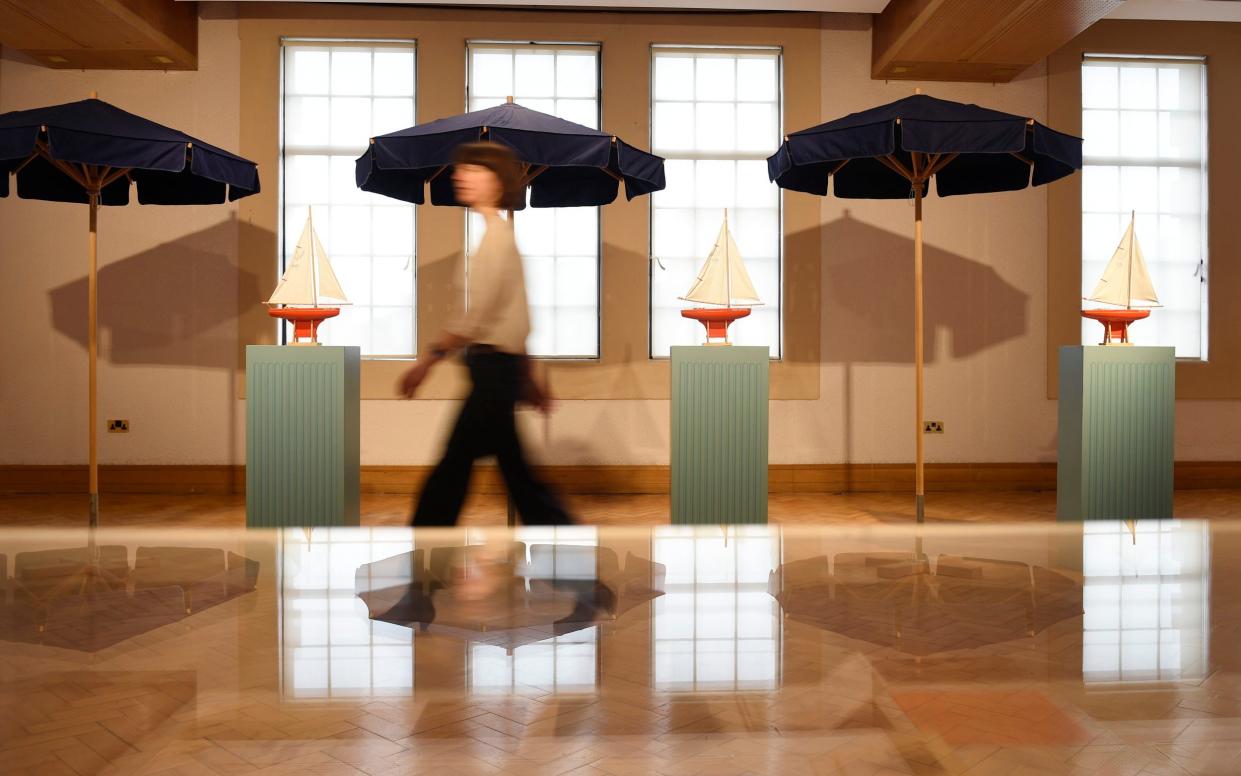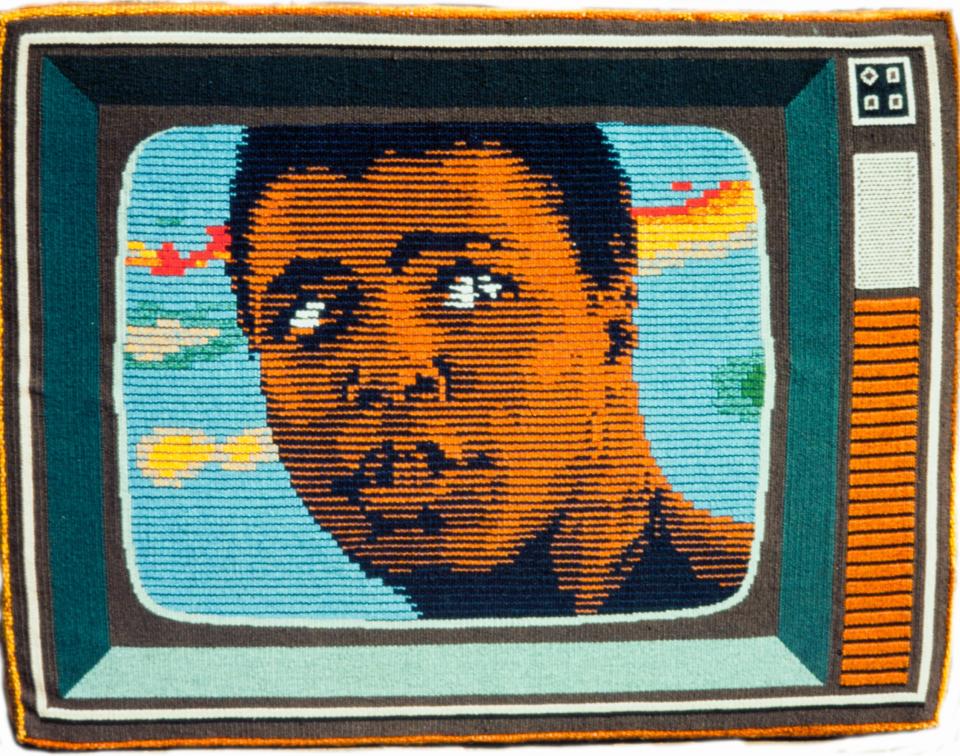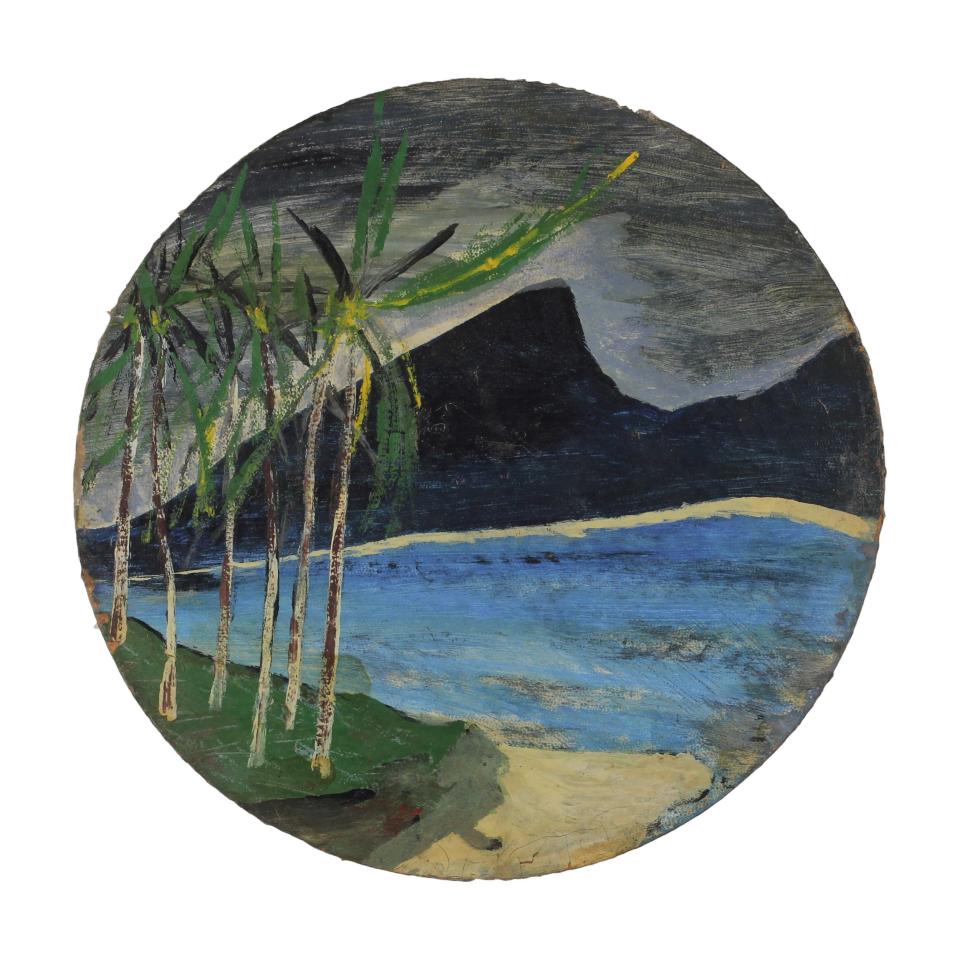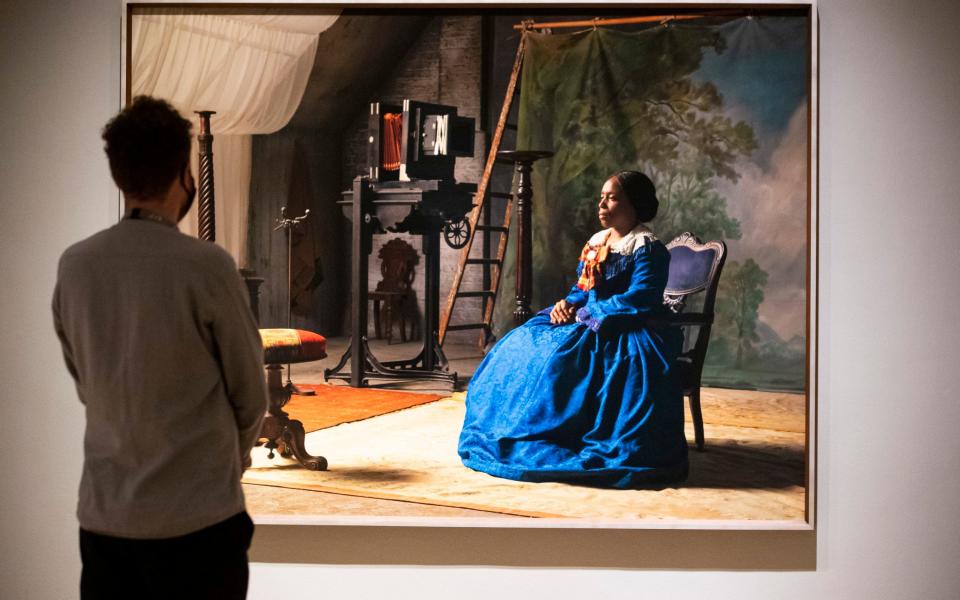Edinburgh Art Festival, review: a bitty affair, but much to absorb and admire

- Oops!Something went wrong.Please try again later.
There are more than 35 exhibitions in this year’s Edinburgh Art Festival, which is back following a one-year hiatus forced by the pandemic. But if, like me, you have only a day to explore the city, it’s impossible to catch them all. Even with an itinerary as intricate as a Swiss watch, I managed just 12 shows across nine venues – which meant there was a ton of stuff I was sad to miss, not least a new film by the Barbadian-Scottish artist Alberta Whittle, a recipient of one of Tate’s Turner bursaries last year, at Jupiter Artland, a time-gobbling half hour’s drive from the town centre.
In a sense, though, this doesn’t matter, because the festival remains a bitty, inward-looking affair: a sort of pride-of-Scotland showcase, still lacking the cohesion and heft of the Edinburgh International Festival, Frankly, it could do with greater unity and ambition, and a few more stellar names, to make a proper splash.
Still, there’s much to absorb and admire, such as City Art Centre’s two-floor exhibition exploring maritime-themed works by the Scottish concrete poet Ian Hamilton Finlay, or Dovecot Studios’ retrospective for his compatriot, the colour-blind tapestry weaver Archie Brennan, who always strove to elevate his medium.
The Fruitmarket gallery reopens following a £4.3 million restoration, having transformed a former nightclub next door into a raw-brick, double-height, impressively moody exhibition space, clad with dark, stained boards from the dancefloor. Inside, there’s a mini-retrospective for the Scottish sculptor Karla Black, who embellishes abstract forms (Cellophane bows, sugar-paper totems and topsoil ziggurats, scrunched-up swags of polythene like levitating tutus) with surprising materials, such as make-up, gels, and over-the-counter medicines. Imagine pastel-coloured bath bombs fizzing on every side, and you’ve got the gist.
Yet, despite all the pink, soft yellow, and baby blue, nothing feels overly pretty or girly: as well as smearing coloured Vaseline across windows, Black trails earth around the murky Warehouse until it resembles a lunar landscape sprinkled with gold and copper leaf like confetti left over from the venue’s final disco. Her work is closer in spirit, I’d suggest, to a wipe smeared with last night’s cosmetics than a freshly made-up face. Which, in this context, is a compliment.

Elsewhere, Ingleby is showing 64 small, porthole-like paintings, as well as little wooden sculptures with the appearance of playthings, by Frank Walter, the eccentric Caribbean artist and self-styled 7th Prince of the West Indies, Lord of Follies and the Ding-a-Ding Nook. When he died, in 2009, Walter left behind 5,000 astonishing artworks, many produced in a remote shack on an Antiguan hillside without electricity or running water. A presentation at the 2017 Venice Biennale brought him international recognition – earlier this year, David Zwirner mounted a show of his paintings in Mayfair – but Ingleby, to their credit, have been working with his estate since 2012. Their new exhibition of “spools”, as Walter called these rough-and-ready pictures of mangos, animals, the odd abstracted smokestack, and landscapes with glowering grey skies that perhaps evoke his time in Europe, is enchanting.
Alison Watt’s paintings, meanwhile, at the Scottish National Portrait Gallery, are their antithesis: immaculate, minimalist studies of solitary objects – white feathers, lace handkerchiefs, cut flowers, and, bizarrely, crisp cabbage leaves – responding to a pair of intimate portraits of his first and second wives by the 18th-century Scottish artist Allan Ramsay. If Edinburgh, at festival time, can feel frenetic, here is an opportunity for stillness, silence, contemplation.

There’s not much quiet inside the 19th-century Burns Monument atop Calton Hill, where Nigerian artist Emeka Ogboh presents Song of the Union, a seven-channel choral installation, and festival co-commission, featuring singers from every EU member state belting out “Auld Lang Syne” in their own language. Whatever your take on Brexit, for that’s what his work is about, it’s very rousing, and instils warm feelings of togetherness, despite the linguistic difference: a sort of Tower of Babel in reverse, resulting in harmony, not cacophony.
Over at Edinburgh Sculpture Workshop, there’s another new commission: a half-hour film-cum-shaggy dog story about our increasingly vexed relationship with contested civic monuments, by the Irish artist Sean Lynch, who was invited (I never got to the bottom of why) to reflect on the history of a mysterious 18th-century building material called “Coade stone”. The wobbly camerawork is deliberately lousy, while the presentation and whimsical voiceover, by Irish actress Gina Moxley, lampoon creaky television documentaries: don’t miss the arch paean to a random model of Edinburgh’s Scott Monument fashioned from tiny timber chip forks, which Lynch, who loves going off on tangents, discovered in the stores of a museum. It’s all very droll, in a studenty kind of way, but far too meandering and slight to be the centrepiece of a festival.

By contrast, receiving its British premiere at the Scottish National Gallery of Modern Art, Isaac Julien’s 10-screen film installation, Lessons of the Hour, a glossy “meditation” on the life and times of the 19th-century African-American abolitionist Frederick Douglass (an extraordinary historical figure who escaped slavery, and spent a couple of years in Scotland during the 1840s while campaigning against it), has the production values of an expensive feature film. Indeed, if Lynch is unduly shambolic, Julien goes too far the other way, tipping over into Merchant Ivory or primetime costume drama territory: there’s a lot of soulful staring and swaggering about in beautifully cut garments, and too many fake beards.
Until Aug 29. Details: edinburghartfestival.com

